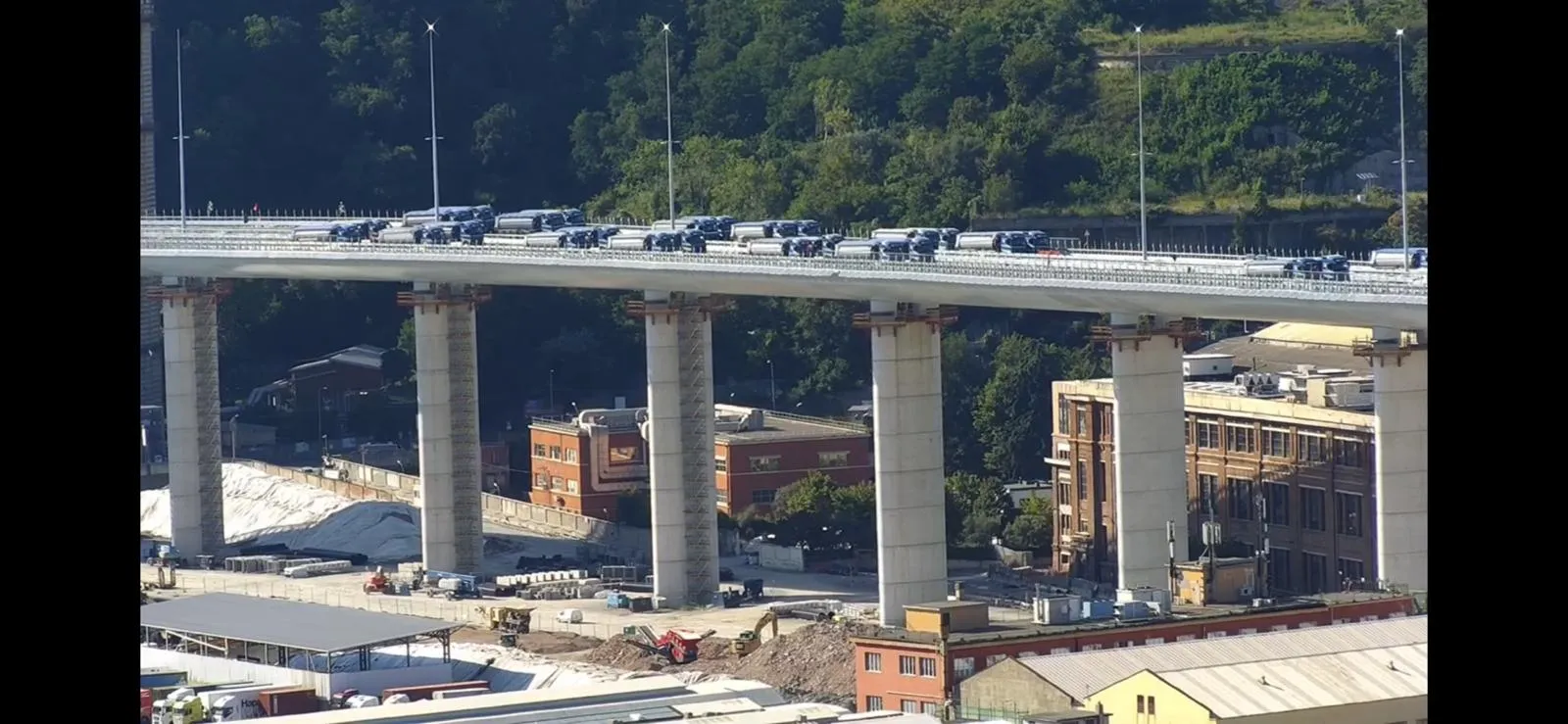
The San Giorgio Bridge - the Morandi Bridge replacement in Genoa, Italy - will open on Monday following several weeks of load tests.
The tests started earlier this month following the recent near completion of the structure in a record 13 months by contractors Webuild and Fincantieri. The series of tests, conducted by state motorways entity Anas and Rina initially consisted of 16 heavy trucks driving along the bridge during what is called phase zero of a preliminary assessment.
Later, another 56 trucks lorries weighing 44 tonnes each - a combined weight of 2,500 tonnes - put the bridge through further tests.
Static load tests continued in the coming days trucks continued to run along the bridge. The eastern ramp, however, had remote-controlled vehicles on it in the early parts of the tests.
Meanwhile, Webuild has been completing its work preparing the bridge for delivery, installing glass and solar panels, setting up signage and preparing the final layer of asphalt 4cm thick.
The new bridge was designed by Renzo Piano.
The old Morandi Bridge was named after its structural designer but officially called Viadotto Polcevera, or Polcevera Viaduct in English. It was constructed between 1963 and 1967 along Italy's A10 motorway over the River Polcevera. It collapsed during a severe storm in 2018, which involved multiple fatalities.







